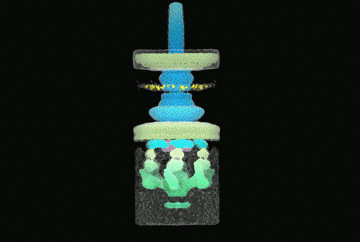Research team captures images of pathogens' tiny 'syringes'

Salmonella and many other bacterial pathogens use a nano syringe-like device to deliver toxic proteins into target human cells. Now scientists at Yale and University of Texas Medical School-Houston have used cryo-electron tomography to reveal the molecular structure of this device, which is about 1/1000th the width of a human hair.
The nano-syringe, called Type III protein secretion machine, features an injection point at one end and a sort of staging area at the bottom, where proteins are selected and sorted for delivery into target cells.
"The device is like a stinger and injects ready-made bacterial proteins into mammalian cells to commandeer them for the benefit of the pathogen," said Jorge Galan, the Lucille P. Markey Professor of Microbial Pathogenesis and co-senior author of the paper.
Knowledge of the structure could help researchers devise new anti-infective strategies against a variety of bacterial pathogens such as Salmonella, Pseudomonas, Escherichia coli, Yersinia pestis, and Chlamydia. The research was published March 9 in the journal Cell.
More information: In Situ Molecular Architecture of the Salmonella Type III Secretion Machine. Cell.
Journal information: Cell
Provided by Yale University

















